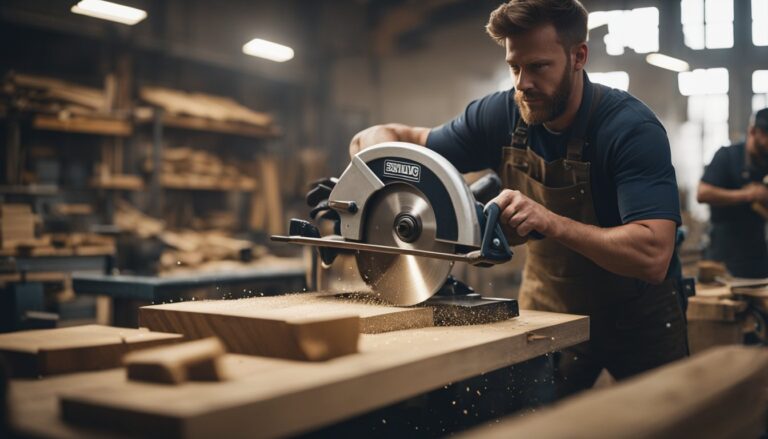Adding Vents to Work Boots: Enhancing Comfort and Breathability
Work boots are essential for many professionals, providing protection and support in demanding environments. While these boots offer crucial safety features, they can sometimes lack proper ventilation, leading to discomfort and foot health issues. Adding vents to work boots can improve breathability, comfort, and overall foot hygiene.
Proper ventilation in work boots allows air to circulate, reducing moisture buildup and preventing unpleasant odours. This modification can benefit those who spend long hours on their feet or work in warm conditions. By enhancing airflow, workers can experience increased comfort and potentially improved productivity throughout their workday.
Implementing vents in work boots requires careful consideration of the boot’s structure and the wearer’s specific needs. Various methods and materials can create effective ventilation systems without compromising the boot’s protective qualities. Understanding these options and techniques is crucial for successfully enhancing work boot performance.
Key Takeaways
- Adding vents to work boots enhances breathability and comfort
- Proper ventilation reduces moisture buildup and prevents odors
- Careful implementation ensures improved airflow without compromising safety
The Importance of Boot Ventilation
Proper ventilation in work boots is crucial for foot comfort and health. During long workdays, it impacts moisture control, odour prevention, and overall foot well-being.
Understanding Air Circulation in Work Boots
Air circulation in work boots is essential for maintaining a healthy foot environment. Breathable materials allow air to flow in and out of the boot, reducing heat buildup and moisture accumulation.
This exchange of air helps regulate foot temperature and prevents excessive sweating. Adequate ventilation also aids in evaporating moisture that does accumulate, keeping feet drier throughout the day.
Boots with poor air circulation can trap heat and moisture, creating an ideal environment for bacteria and fungi growth. This can lead to unpleasant odours and potential foot health issues.
Benefits of Breathable Work Boots
Breathable work boots offer numerous advantages for workers who spend long hours on their feet. They help maintain optimal foot temperature, reducing discomfort and fatigue during extended wear.
Improved moisture management is a crucial benefit of well-ventilated boots. By wicking away sweat and allowing it to evaporate, breathable boots keep feet drier and reduce the risk of blisters and skin irritation.
Odour control is another significant advantage. Proper air circulation helps prevent bacteria buildup that causes unpleasant smells, keeping boots fresher for extended periods.
Breathable work boots also contribute to better foot hygiene. Reducing moisture and promoting a drier environment helps prevent fungal infections like athlete’s foot.
Assessing Your Work Boot Needs
Choosing the right work boots with proper ventilation requires carefully considering your workplace requirements and personal preferences. Comfort and safety are paramount when selecting breathable footwear for demanding job environments.
Factors for Breathable Comfort
Fit plays a crucial role in work boot comfort. Boots should allow enough room for toes to move freely while providing a snug fit around the heel and ankle.
Materials significantly impact breathability. Leather offers durability and some breathability, while synthetic fabrics can provide enhanced ventilation.
Lightweight designs reduce fatigue during long shifts. Look for boots with flexible soles that allow natural foot movement.
Proper arch support helps distribute weight evenly and reduces strain. Some boots feature removable insoles for customized comfort.
Safety Features Considerations
Steel toe caps offer robust protection against falling objects. Composite toe alternatives provide similar safety and less weight.
Puncture-resistant soles guard against sharp objects underfoot. This feature is essential in construction and industrial settings.
Slip-resistant outsoles improve traction on wet or oily surfaces. Look for boots with deep treads and specialized rubber compounds.
Electrical hazard protection is crucial for workers exposed to live electrical circuits. Boots with this feature have non-conductive soles and heels.
Chemical-resistant materials protect against workplace spills and splashes. This is particularly important in industrial and laboratory environments.
Types of Ventilation Systems for Boots
Work boot ventilation systems utilize various designs to regulate airflow and moisture. These systems aim to keep feet cool and dry during extended wear.
Ductwork Designs in Footwear
The ductwork in boots creates pathways for air circulation. Some designs incorporate small channels along the sole, allowing air to flow from toe to heel. Other systems use perforations in the upper material, often paired with breathable membranes.
Mesh panels are a common feature, strategically placed in high-heat areas like the sides and tongue. These panels promote air exchange while maintaining structural integrity.
Some advanced boots employ active ventilation systems. These use small, built-in fans to force air circulation. The fans are typically powered by the wearer’s movement or small batteries.
Balancing Moisture and Air Flow
Adequate boot ventilation must manage both air and moisture. Many systems combine moisture-wicking linings with breathable outer materials. This combination helps move sweat away from the foot while allowing it to evaporate.
Some boots use multi-layer systems. The inner layer wicks moisture, while the outer layers provide waterproofing and breathability. Gore-Tex is a popular material for this purpose, offering water resistance and air permeability.
Ventilated insoles also help manage moisture. These insoles often feature perforations or channels to improve air circulation underfoot. Some designs incorporate activated charcoal or other odour-absorbing materials to combat foot odour.
Practical Guide to Adding Vents to Work Boots
Adding vents to work boots can improve airflow and comfort. This guide outlines the necessary tools and steps to install vents effectively and safely.
Tools and Materials Needed
To add vents to work boots, gather these essential items:
- Leather punch or jigsaw
- Pencil or marker
- Ruler
- Vent grills (metal or plastic)
- Strong adhesive
- Scissors
- Safety glasses
- Work gloves
A leather punch works well for small, circular vents. A jigsaw with a fine-toothed blade is more suitable for larger or custom-shaped vents.
Step-by-Step Vent Installation
- Choose vent locations: Mark areas where air circulation is most needed on the boot, typically on the sides or near the ankle.
- Measure and mark: Use a ruler to ensure symmetry and spacing between vents.
- Cut the openings: For circular vents, use a leather punch. For larger vents, carefully cut along the marked lines with a jigsaw.
- Smooth edges: Sand or file any rough edges to prevent fraying.
- Install vent grills: Apply adhesive around the vent openings and press the grills firmly into place.
- Allow drying time: Let the adhesive set according to the manufacturer’s instructions.
- Test the vents: Flex the boot to ensure the vents are secure and don’t compromise the boot’s structure.
Always prioritize safety and wear protective gear during the installation process.
Maintaining Ventilated Work Boots
Proper maintenance ensures that ventilated work boots remain functional and comfortable. Regular care protects the ventilation system and extends the lifespan of the footwear.
Cleaning and Care for Longevity
Clean ventilated work boots after each use. Use a soft brush to remove dirt and debris from the vents. For stubborn grime, use a damp cloth with mild soap. Avoid soaking the boots, as excess water can damage the ventilation system.
Allow boots to air dry completely before wearing. Stuff them with newspaper to absorb moisture and maintain shape. Apply a waterproofing spray to protect against liquid penetration while maintaining breathability.
Use a leather conditioner to prevent cracking in leather boots. This helps preserve the integrity of ventilation holes. Replace insoles regularly to combat foot odour and maintain comfort.
Troubleshooting Common Ventilation Issues
Check vents periodically for blockages. They clear clogged holes with a toothpick or small brush. If vents become damaged, consult a cobbler for repairs.
In humid conditions, use moisture-wicking socks to enhance ventilation efficiency. For persistent odour issues, sprinkle baking soda inside the boots and let them sit overnight.
If boots lose breathability, inspect the lining for wear. A damaged lining can impede airflow. If ventilation performance declines significantly, consider professional restoration or replacement.
For hot weather, rotate between multiple pairs of boots to allow thorough drying between uses. This practice helps maintain ventilation effectiveness and prolongs boot life.


